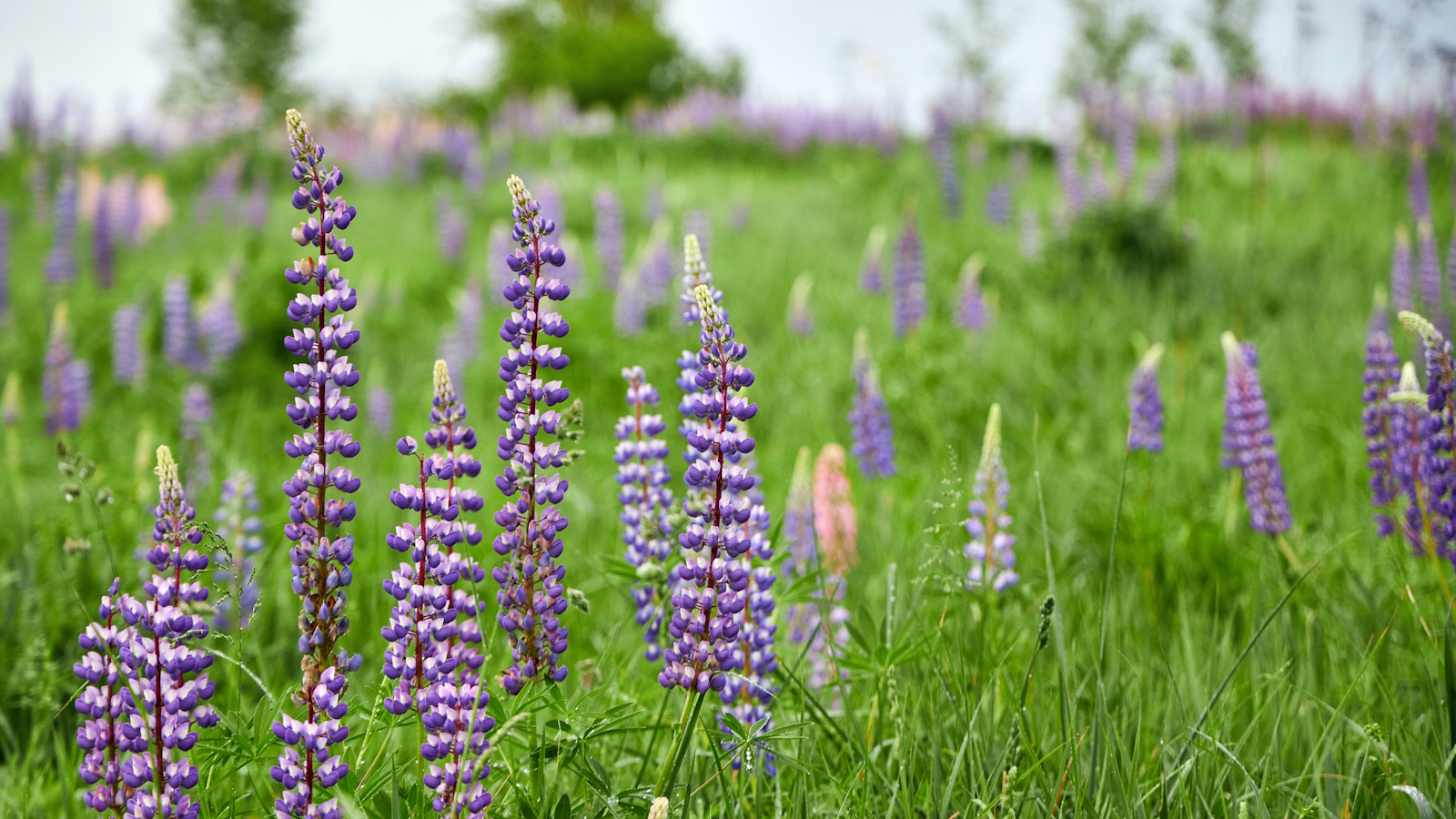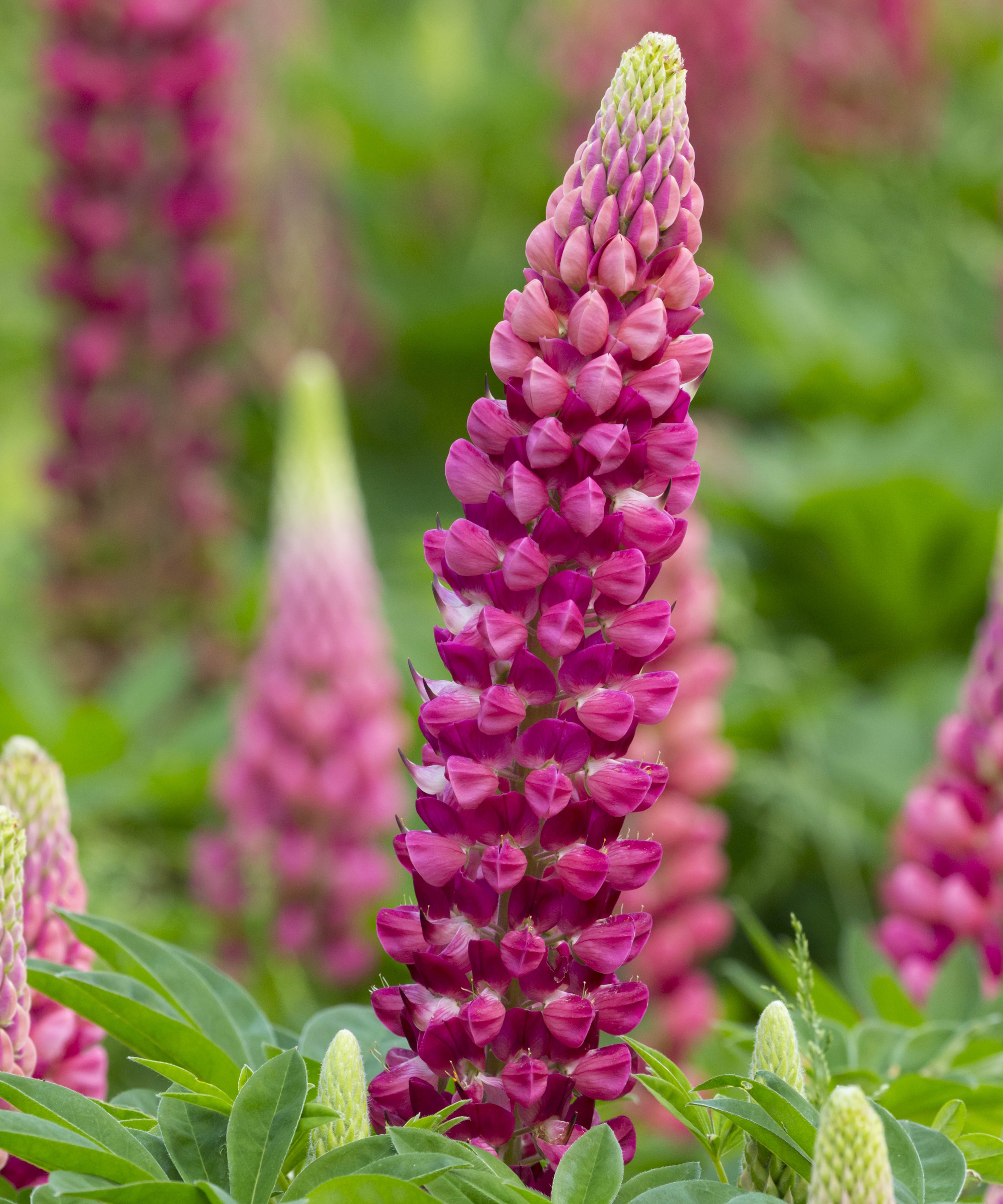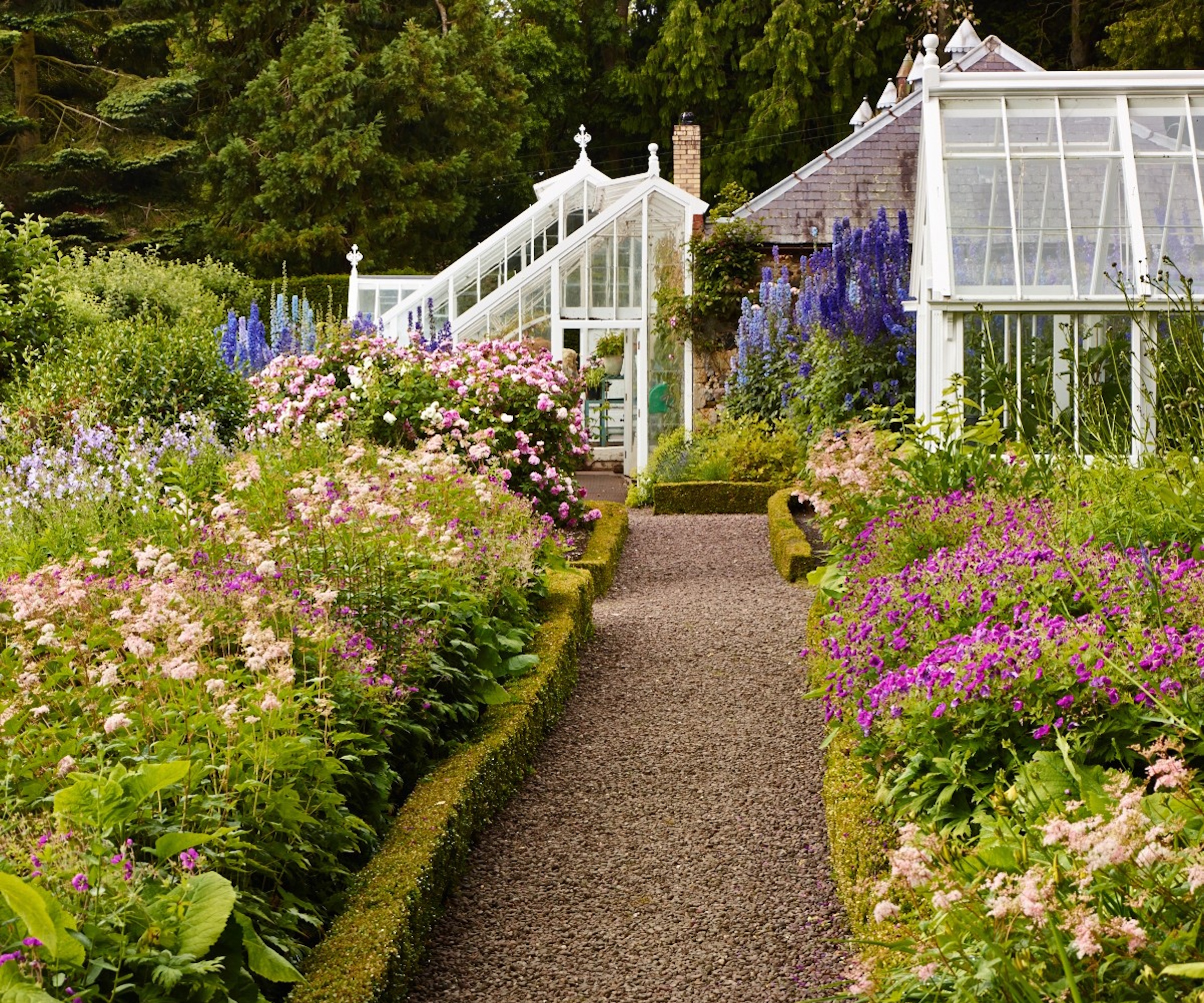
Native to North and South America, lupines - sometimes called lupins - are those striking, spiky herbaceous perennials that vibrantly bloom in late spring to mid-summer in USDA Zones 4-8. As a member of the legume family, they are able to fix nitrogen in the soil, enriching it for neighboring plants and for themselves.
Visually captivating in shades of blue, purple, red, pink and white, lupines’ whorled spikes look like flowering rockets about to shoot into orbit. Not only do lupines add swathes of color to gardens, but they are relatively easy to grow, too.
Lupines are particularly popular in wildflower meadows and are a staple of the cottage garden style. In my opinion, they are one of the best perennials , whether as direct-sown seeds or container-grown plants, as doing so ensures bright and brilliant spring blooms. Here, one cut flower expert reveals how to grow lupines for a dazzling display.

How to grow lupine
You may have guessed at its family heritage by the shape of its flowers, which have the same form as those of the pea flower. Expect to see pollinators such as bees and butterflies making frequent visits to lupines while in bloom.
As for its foliage, lupines have soft, green leaves, made slightly silver in appearance by a dense coating of hairs. These leaves are somewhat tropical in appearance, being palmately divided into as many as 28 leaflets.
Growing habits of lupine

There are upwards of 200 known species of lupines, ranging from 1 ft. to 4 ft. tall and up to 2 ft. wide.
While they can tolerate the warmer temperatures of zone 8, they do prefer summer conditions on the cooler side, as experienced in the northern tier of the U.S.
‘These tall perennial flowers are true showstoppers in the garden, growing in tall colorful spikes above lush, leafy mounds,’ says Laura Walsh, Director of Marketing, Oasis Forage Products.
‘I love how their bold, vertical growth adds drama and structure, making them perfect for filling in borders or as a focal point. When planted in groups, they create a striking, wildflower garden display.’
Laura loves the Russell hybrids in particular. ‘They come in rich jewel tones, mix beautifully in the garden, and make a great addition to indoor floral arrangements,’ she says.
‘Gallery Blue’ is another favorite - it’s a bit shorter, so great for smaller spaces.’ The Russell hybrids reach up to 3 ft. tall, whereas ‘Gallery Blue’ tops off at about 2 ft. tall.
‘Gallery Blue’ and other colors in the Gallery series of lupines are available from Nature Hills.
Laura finds lupines to be perfect for cutting gardens, where their long-lasting blooms are at the ready for indoor arrangements.
‘They also work beautifully in borders, adding a pop of early-summer color,’ Laura adds. If you’re short on space, Laura proposes growing them in large containers. ‘Just be sure they get plenty of sunlight and have room to stretch out.’
Care guide for lupine

- Soil: Laura suggests planting them in well-draining soil. ‘They prefer slightly acidic to neutral soils,’ she says. A soil test can help you determine your pH levels. A variety of soil test kits are available on Amazon.
- Light: Lupines are lovers of full-sun conditions. ‘Picture them in nature, and you’ll see them in expansive meadows in bright sun,’ Laura says.
- Watering: Moderate watering is recommended. ‘Keep the soil moist, but not too soggy,’ Laura advises.
- Fertilizing: ‘Lupines are light feeders,’ Laura says. ‘Remember that too much nitrogen results in fewer blossoms.’
- Pruning: ‘Deadheading your lupines will encourage them to rebloom,’ she advises. Laura also suggests cleaning up any dead branches during the season to prevent disease from spreading and to cut them all the way back and remove debris in the fall.
- Toxicity: Lupines can be toxic, depending on species. Most often, it’s the seeds and pods that can cause humans and pets to feel symptoms of nausea, confusion, dizziness and even respiratory issues in severe cases. Lupines are especially toxic to cattle, sheep and horses, where it can cause liver disease and pregnancy abnormalities. This toxicity is what makes them unappetizing to deer.
- Pests: ‘Aphids can be a problem with lupines, where they can cause curled leaves and stunted growth,’ Laura warns. Also, powdery mildew can cause leaves to turn a yellow-brown color and distort the leaf shape.
FAQs
Why won’t my lupines bloom?
‘Usually, lupines don’t bloom if it’s growing either in too much shade or in soil that is a little too rich,’ Laura says. ‘They like soil that is lean and locales that are sunny.’
Can I grow lupines from seeds?
‘Yes!’ Laura says. ‘Start them indoors or sow directly in the garden once the soil is warm and workable. ‘Just be patient,’ Laura advises, ‘they can take a bit longer to establish.’ Find a seed mix of different Russell hybrid colors at Burpee.
If you’re growing lupines in containers, use a deep pot that is at least 12-18 in. deep to accommodate lupines’ long taproots and fill it with a light, well-draining soilless mix.
Locate them in a sunny spot and water them evenly and consistently without letting them stay soggy. You may need to stake or use a trellis if you’re planting some of the taller varieties.
Speaking of taller perennials common to cottage gardens, we’ve put together a list of the best types of delphiniums you can plant in your garden, including some that are as tall as 7 feet and a few that are slightly more diminutive at 4 feet.
Shop garden accessories
These seed-starting strips from Jiffy are biodegradable and can be planted directly into borders when your lupines are ready.







